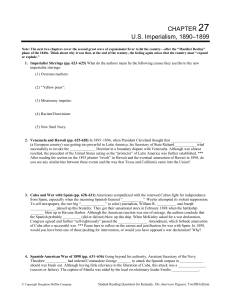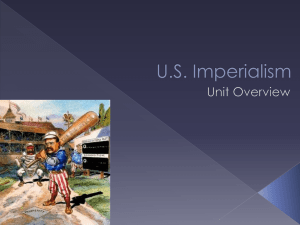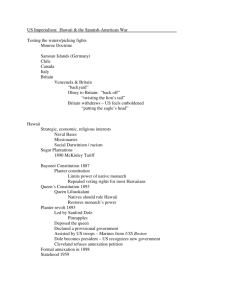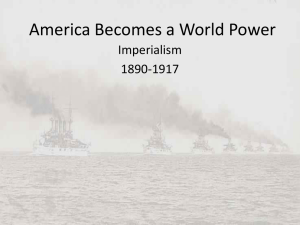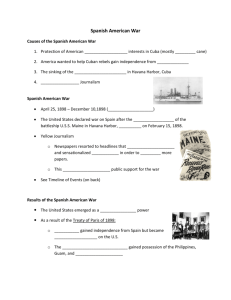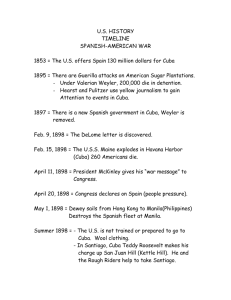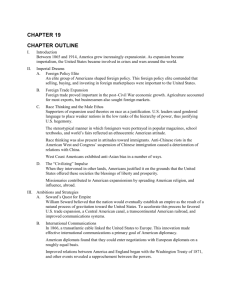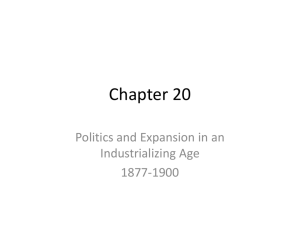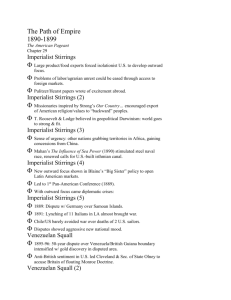U.S. Imperialism 1890-1899: Reading Questions
advertisement
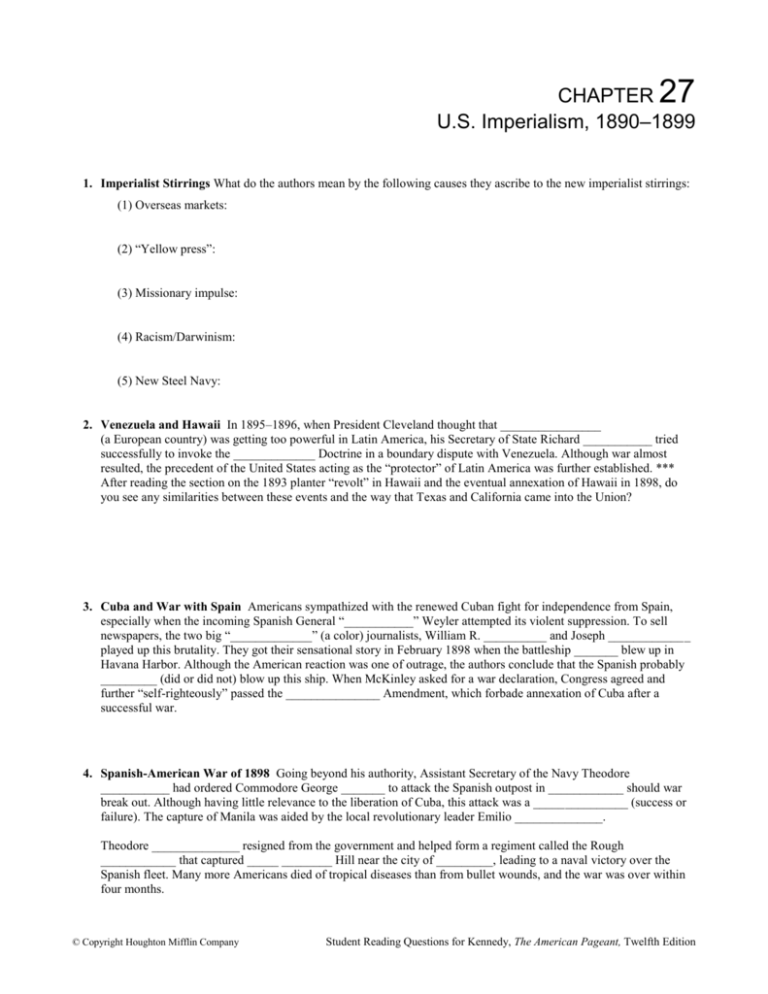
27 CHAPTER U.S. Imperialism, 1890–1899 1. Imperialist Stirrings What do the authors mean by the following causes they ascribe to the new imperialist stirrings: (1) Overseas markets: (2) “Yellow press”: (3) Missionary impulse: (4) Racism/Darwinism: (5) New Steel Navy: 2. Venezuela and Hawaii In 1895–1896, when President Cleveland thought that ________________ (a European country) was getting too powerful in Latin America, his Secretary of State Richard ___________ tried successfully to invoke the _____________ Doctrine in a boundary dispute with Venezuela. Although war almost resulted, the precedent of the United States acting as the “protector” of Latin America was further established. *** After reading the section on the 1893 planter “revolt” in Hawaii and the eventual annexation of Hawaii in 1898, do you see any similarities between these events and the way that Texas and California came into the Union? 3. Cuba and War with Spain Americans sympathized with the renewed Cuban fight for independence from Spain, especially when the incoming Spanish General “___________” Weyler attempted its violent suppression. To sell newspapers, the two big “_____________” (a color) journalists, William R. __________ and Joseph _____________ played up this brutality. They got their sensational story in February 1898 when the battleship _______ blew up in Havana Harbor. Although the American reaction was one of outrage, the authors conclude that the Spanish probably _________ (did or did not) blow up this ship. When McKinley asked for a war declaration, Congress agreed and further “self-righteously” passed the _______________ Amendment, which forbade annexation of Cuba after a successful war. 4. Spanish-American War of 1898 Going beyond his authority, Assistant Secretary of the Navy Theodore ___________ had ordered Commodore George _______ to attack the Spanish outpost in ____________ should war break out. Although having little relevance to the liberation of Cuba, this attack was a _______________ (success or failure). The capture of Manila was aided by the local revolutionary leader Emilio ______________. Theodore ______________ resigned from the government and helped form a regiment called the Rough ____________ that captured _____ ________ Hill near the city of _________, leading to a naval victory over the Spanish fleet. Many more Americans died of tropical diseases than from bullet wounds, and the war was over within four months. © Copyright Houghton Mifflin Company Student Reading Questions for Kennedy, The American Pageant, Twelfth Edition 5. Annexing the Philippines—Imperialism or No? As a result of the peace treaty signed with Spain in 1898, Cuba was freed (with reservations!) and the United States took over responsibility for the former Spanish possessions of ________, _______________ , and the __________________. President ____________ then faced the “devil’s dilemma”—what to do with the Philippines. Should he keep them and try to join the world’s imperialist powers, or should he set them free as had been done in Cuba? List three imperialistic factors that convinced McKinley to keep the islands and three arguments against annexation used by the newly organized Anti-Imperialist League. ***Evaluate these arguments. Which arguments are strongest and weakest in your opinion? Imperialist Arguments Anti-Imperialist Arguments (1) (2) (3) (4) Your opinion: 6. Problems of Empire Congress granted limited self-government to the island of _________ _________ and, in 1917, gave its people U.S. citizenship. Cuba was governed until 1902 by U. S. General Leonard _________, after which, as required under the ____________ Amendment, U.S. troops withdrew. However, Cuba was forced to write the socalled __________ Amendment into its own constitution. What were the three conditions of Cuban independence (the consequences of which are still evident today) written into this amendment? (1) (2) (3) © Copyright Houghton Mifflin Company Student Reading Questions for Kennedy, The American Pageant, Twelfth Edition

